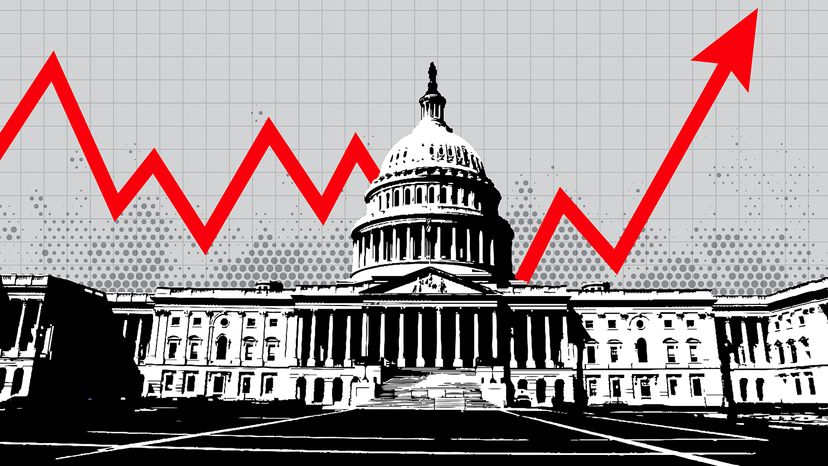Without further ado, here are the top 10 largest economies in the world. These are projections by the IMF (International Monetary Fund) for the year 2025, as ranked by nominal GDP. All amounts are in U.S. dollars.
1. The United States ($30.34 trillion)
It probably comes as no big surprise that the United States is at the top of the list. The U.S. has been a major component of the World GDP since at least the Second World War, and because the dollar is the world's reserve currency, it is both a domestic powerhouse and a target for lots of foreign investment.
However, due to declining government investment (especially in things like infrastructure, which in America has long been in severe decline), and the rising costs of healthcare and other basic necessities, the nation's status as the world's largest economy and leader in global GDP has become increasingly tenuous.
2. China ($19.53 trillion)
China is the most recent big success story on this list, having gained its status as the second-largest economy in the last quarter-century.
It was just outside the top 10 in 2000, but its current standing in the global economy owes a lot to a combination of state-guided privatization and massive investment in infrastructure and industry.
Like those of many large countries, the Chinese economy faces challenges, including how to maintain its economic growth, having set such high expectations. It also has serious inequality and environmental issues, which are byproducts of its supercharged economy that contributed to global growth after the 2008 financial downturn.
3. Germany ($4.92 trillion)
Germany has the third-largest economy in the world and the largest economy in Europe. It's therefore a major economic and political player, and it's known for its high quality manufacturing.
Key sectors in the German economy include automobiles, chemicals and telecommunications, as well as service industries such as tourism and healthcare.
4. Japan ($4.39 trillion)
An economic analysis of Japan can't help but confuse: Its economy was, for a few decades, the most celebrated success in the world, rivaling Europe and the United States. Then came the infamous "lost decade" of the 1990s, when growth significantly slowed. Japan was also rocked, along with the rest of the world, by the financial crisis of 2008.
There has been some rebound recently, with renewed economic growth in the export industries for which Japan became so well known. Like many other modern societies, Japan has an aging population, posing some challenges to continued growth.
5. India ($4.27 trillion)
India, as the world's fifth-largest economy, is another country on the rise, but also one facing significant challenges, both social and environmental. While the Indian government has taken steps to encourage foreign investment and domestic development, much of the population still struggles with basic necessities.
Rapid growth and modernization in the urban centers has seen uneven benefits to the society as a whole, even as the country's elite strives to compete with other advanced economies.
6. United Kingdom ($3.73 trillion)
The days of the British Empire are long over, but the U.K. still holds a position as the sixth-largest economy in the world.
The service sectors are its largest and most economically consequential: finance, insurance and international business services. London is well known as a hub for international finance, and is also one of the most expensive cities in the world.
Brexit, or the United Kingdom's withdrawal from the European Union, has had effects on the British economy that are still unfolding, making its place on a future list uncertain.
7. France ($3.28 trillion)
France, with the seventh-largest economy in the world, is also the biggest tourist destination in the world, so it's no surprise that tourism is a major contributor to its GDP. France has strong labor unions and lots of government expenditure, which are factors in high labor costs.
The French economy has also seen slower growth relative to some other European states — and, like many societies, there are political and economic tensions between the urban and rural areas of the country.
Many urban workers see themselves as the "highly skilled workforce" and demand higher pay, while agriculture and some manufacturing sectors have stagnated.
8. Italy ($2.46 trillion)
Italy has the eighth-largest economy in the world. Like France, tourism is a big factor in its GDP, as well as high net exports of consumer goods.
Still, Italy's economic situation varies considerably by region, with the north being, in general, more industrial and wealthier. Meanwhile, the more rural south is where many of the biggest tourist draws exist, as well as much of the rich agricultural land.
9. Canada ($2.33 trillion)
Canada's fortunes as the ninth-largest economy in the world are thickly entwined with those of its southern neighbor, the United States.
Previously sturdy trade agreements ensured that the majority of Canada's exports went to the U.S., and it got a boost from its rich store of natural resources, including agricultural products and fossil fuels such as natural gas.
10. Brazil ($2.31 trillion)
Rounding out the top 10 is Brazil, with its diversified economy, the largest in South America.
Brazil is incredibly rich in natural resources, although it has often struggled to balance extraction and conservation. The destruction of the Amazon rainforest is a good example of the dubious merits of seeking GDP growth at the expense of ecological stability.
Brazil has also struggled mightily with political unrest and corruption, which factors into its economic issues, as well as how the wealth is shared among its citizens.
